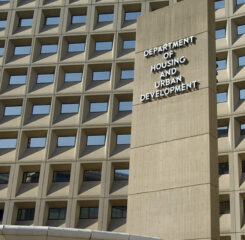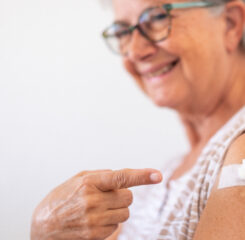Home Health CY2022 Rates Increase 2.6% and HHVBP Expanded
CY2022 Rate Adjustments/Updates
The rule updates the Medicare home health (HH) payment rates and wage index for CY2022 increasing them 2.6%, which is higher than the proposed 1.8% rate increase. The total adjustment is an estimated 3.2% increase after considering the updated fixed-dollar loss ratio and the 0.1 percent reduction due to changes in the rural add-on percentages. CMS notes HH rates are further adjusted based upon whether home health agencies (HHAs) adequate reporting of required quality data. Non-compliant HHAs will have their rate further reduced by 2% resulting in a 0.6% rate increase in CY2022.
Further, the final rule recalibrates the Patient-Driven Groupings Model (PDGM) case mix weights, functional levels and comorbidity adjustment subgroups for each of the 432 payment groups under PDGM while maintaining the CY2021 low utilization payment adjustment (LUPA) thresholds for the CY2022 payment year. LeadingAge advocated for CMS to hold both the case weights and the LUPA thresholds constant in its rule comments. CMS said it held the LUPA thresholds at the prior year level acknowledging the potential effects of COVID Public Health Emergency (PHE) on the number of visits received during CY2020. In contrast, it adjusted the case weights as CMS believes all case mix groups will be equally impacted by the PHE. Future rulemaking will address, “the methodology and any associated payment adjustment based on the difference between assumed versus actual behavior change on estimated aggregate expenditures.”
Home Infusion Therapy Service payment rates
Home infusion therapy services payment rates for CY2022 will see an estimated 20% increase in the initial visit and 1.33% decrease in all subsequent visits with an overall estimated impact of a 5.1 % increase in payments to these providers based upon CPI-U increases and a productivity adjustment.
Home Health Value-Based Purchasing Program
CMS will expand the Home Health (HH) Value Based Purchasing (VBP) program to all home health agencies (HHAs) nationwide as of January 1, 2022. However, the first year will be a “pre-implementation” year now instead of a performance year. CMS has committed to provide technical assistance and training during 2022 to assist HHAs to the new HHVBP. HHAs performance on the required HHVBP measures will first be calculated in CY2023 compared to CY2019 as a baseline. The baseline year for HHAs newly certified in CY2019 will be CY2021. For all other new HHAs, their baseline year will be their first full calendar year of services following certification. LeadingAge appreciates this phased in approach as we requested CMS delay the implementation to after the end of the pandemic. With any luck, the country will be past the pandemic by 2023.
HHA rates will first be impacted by the HHVBP in CY2025 and subject to adjustments of plus or minus 5% based upon their performance in comparison to similarly sized HHAs across the country. LeadingAge had asked CMS to phase in the rate adjustment amount starting with 3% but this was not adopted. CMS noted that in prior years of the demonstration model that 93.2% of HHAs received an adjustment of +/- 3%. Large volume HHAs will be compared on Home Health Care Consumer Assessment of Healthcare Providers and Systems (HHCAHPS) survey and HH Quality Reporting Program (QRP) measures, while smaller volume HHAs will just be compared on the HH QRP measures as they are exempt from the HHCAHPS survey under HH QRP. These cohorts will be nationwide not state specific.
CMS will use the following measures to determine CY2022 performance: Improvement in Dyspnea; Discharged to Community; Improvement in Management of Oral Medications; Total normalized Composite Change in Mobility; Total Normalized Composite Change in Self Care; Acute Care Hospitalization During the First 60 days of Home Health Use; Emergency Department Use without Hospitalization During the First 60 Days of Home Health and for larger volume HHAs, HHCAHPS Survey. CMS will consider additional measures in future rulemaking.
Given the start of the expanded program, the HHVBP Model that has been tested through the Center for Medicare and Medicaid Innovation (CMMI) will end one year early. The benefit of this is the HHAs in the participating nine states will not have their CY2022 rates adjusted based upon their performance in CY2020, which may be a positive given the impacts and challenges of the COVID-19 pandemic on care delivery.
Conditions of Participation
The final rule makes permanent certain blanket waivers implemented during the COVID-19 public health emergency by updating the Home Health Conditions of Participation. Specifically, Including:
o Allowing an occupational therapist to conduct the initial assessment visit and complete the comprehensive assessment under the Medicare program but only when OT is part of the home health plan of care with either physical or speech therapy and skilled nursing services are not initially on the care plan.
o “Finalizing the limited use of telecommunications technology when performing the 14-day supervisory visit requirement when a patient is receiving skilled services, we expect that in most instances, the HHAs would plan to conduct the 14-day supervisory assessment during an on-site, in person visit, and that the HHA would use interactive telecommunications systems option only for unplanned occurrences that would otherwise interrupt scheduled in-person visits.” A virtual supervisory visit will only be permitted once per patient per 60-day episode and require use of two-way, real-time communication (both audio and visual). If any care issues are identified during the virtual visit, an onsite, in person visit would need to be conducted within 14-days. RNs are required to visit a home health recipient every 60 days but they no longer have to directly observe an aide in person during those visits. However, it will be required that an aide is directly observed every 6 months for each patient to whom the aide provides services for non-skilled patients.
Quality Reporting Program Changes
CMS finalized changes to the Quality Reporting Program extending the mandatory COVID-19 reporting requirements beyond the PHE through December 31, 2024. It also took the following actions:
- Removed the OASIS-based measure “Drug Education on All Medications Provided to Patient/Caregiver During All Episodes of Care” because HHAs have demonstrated high performance on the measure and little variation. Data on this measure will no longer be reported on Care Compare after October 1, 2023.
- Beginning with CY2023, CMS will replace two hospitalization measures – Acute Care Hospitalization During the First 60 days of Home Health and Emergency Department Use without Hospitalization During the first 60-days of home health—with a Home Health Within Stay Potentially Preventable Hospitalization (PPH) measure. The PPH measure is designed to include unplanned hospitalizations including both inpatient admissions and observation stays while excluding planned hospitalizations.
- CMS will begin publicly reporting in April 2022 on HHA performance on the following measures: Percent of Residents experiencing One or More Major Falls with Injury; and Application of Percent of LTC Hospital Patients with an Admission and Discharge Functional Assessment and a Care Plan that Addresses Function.
- In May 2020, CMS delayed certain HH QRP reporting requirements — Transfer of Health(TOH) Information measures and Standardized Patient Assessment Date Elements (SPADES) — until January 1 one year after the end of the public health emergency (PHE) as part of an interim final rule. CMS has received new information that indicates HHAs can report this data so beginning January 1, 2023, HHAs will need to collect data on: the TOH Information Provider-PAC measure andTOH Information to Patient-PAC measure, and certain SPADES on the updated version of the OASIS assessment. The updated version of the OASIS instrument, OASIS-E will be available in early 2022.
Medicare provider enrollment policies: Codifies several existing Medicare provider and supplier enrollment policies related to the effective date and deactivation of billing privileges and certain provider enrollment transactions
Hospice survey and enforcement: Finalizes hospice survey and enforcement requirements as required by the Consolidated Appropriations Act 2021. LeadingAge did ask that CMS establish a technical expert panel focused on how the survey findings and the special focus program information will be publicly displayed. We also stressed the importance of these new survey and enforcement requirements being consistently applied across providers and states. CMS indicated it will consider convening a TEP or other vehicle for gathering stakeholder input.

Most Recommended
November 08, 2024
 HOTMA: New Rules for Housing
HOTMA: New Rules for Housing
November 06, 2024
 Colleagues on the Move, November 6, 2024
Colleagues on the Move, November 6, 2024
November 06, 2024
 Analysis: What Does the Final CY2025 Home Health Rule Include?
Analysis: What Does the Final CY2025 Home Health Rule Include?
October 29, 2024
Katie Smith Sloan Urges Members to Build a Movement, Take Action
Recently Added
December 12, 2024
HUD Releases 2025 Operating Cost Adjustment Factors
December 10, 2024



